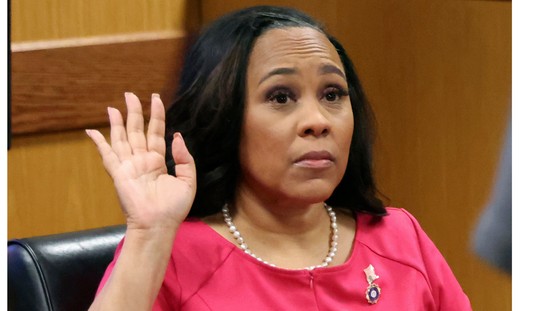Monday, New York magazine published a lengthy story titled “How the West Lost Covid.” The basic theme of the piece isn’t an upbeat one. Author David Wallace-Wells argues that when you step back and look at how various nations did responding to COVID in 2020, many of the western nations didn’t handle it very well. By contrast, some of the nations that did handle it best in terms of limiting the spread and the death toll were in Asia.
But this insight comes bundled with another point about the American experience of COVID. The constant (and ongoing) focus on President Trump as the cause of American failure really doesn’t make a lot of sense in retrospect because lots of other countries with different leaders failed about the same amount:
In the U.S., the story of the pandemic year has been dominated by the character of the president who presided over it so ineptly, often with such indifference it seemed he was rooting for the disease. But the problem with assigning Donald Trump all, or even most of, the blame for America’s suffering is that the country’s failure isn’t unique. In fact, before the arrival of vaccines, the American experience of the coronavirus was not exceptional but typical — at least among those European nations it typically considers its peers. And as the New Year has brought a new administration, experts in fields from public health to economics have grown more comfortable acknowledging that catastrophe was much bigger and deeper than the denier-in-chief and indeed much more “normal” than Americans outraged or mourning are likely to understand.
The metric of deaths per capita is crude, obscuring issues of demography and comorbidity, but by this basic standard the U.S. has suffered less than the U.K., Portugal, and the Czech Republic. It sits clustered with a number of other European nations — Italy, Spain, France — near the E.U. average. The South American average is just below. None of these countries, save Brazil, had presidents or prime ministers who so callously downplayed the threat of the disease as Trump, or who tried to suppress testing, or who held indoor political rallies during a local surge. “But that’s not to say that in some counterfactual scenario where someone else was president, we would not be having difficulty,” Natalie Dean, a biostatistician at the University of Florida, told me. “There are only so many tools at our disposal.”
Francois Balloux, an infectious-disease epidemiologist and computational geneticist at the University College of London, goes further. “It’s not obvious that different measures taken in different places have clearly led to different outcomes,” he says. “There’s a lot of idiosyncrasy, and I think it’s simplistic to say that the countries that have controlled or eliminated the virus did things extremely differently. If you just list, for instance, the interventions that places like New Zealand or Australia have implemented, they’re not drastically different — in stringency nor duration — than in some other places. The country that had the strictest lockdown for longest in the world is Peru, and they were absolutely devastated. I think the slightly depressing message,” Balloux says with a sigh, “is that there is not just a set of policies that will bring success and can just be applied to any place in the world.”
This is not how the disease has been regarded by most American liberals, who’ve tended to see COVID as a straightforward management challenge, in which the pandemic can be “solved” through science-first policy and dutiful compliance — a perspective that has given the pandemic features of a morality play, in which matters of social distancing and masking become tests of executive and personal virtue that determine the course of the disease. But local disgust is not exclusively an Anglo-American phenomenon. “If you read the national press from any country, be it Germany or Switzerland or France, whatever, there’s a strong feeling in most places that, actually, the situation is the worst locally,” says Balloux. The historian Adam Tooze, at work on a rapid-fire account of 2020, argues that this intuition is less an insight into pandemic policy than it is a reflection of national narcissism. “It is clear that both the U.K. and the U.S. will almost perforce frame what’s happened in terms of narratives of national crisis,” he says. “But in general I just don’t think it’s all that helpful either in the U.K. or the U.S. to talk in terms of a specific national failure.”
I remember making something very much like this argument repeatedly last year in April and May. Yes, we (meaning America) screwed up a lot of things that we could have done better, starting with a failed COVID test that languished in the bureaucratic netherworld for most of February. Still, the idea that all of the failure was avoidable if we just had the right leader was just too much for many on the left to resist. And that is, by the way, how you wind up with Andrew Cuomo as the hero of the pandemic, despite the fact that his state still has one of the highest death tolls per capita.
To be clear, I’m not saying that nothing Trump did mattered. What I am saying and what I was saying a while ago is that what a lot of people did, down to every individual, mattered. It mattered when wealthy people in New York started fleeing to their vacation homes around the country. That exodus wound up spreading the virus and seeding it everywhere. It mattered that Gov. Cuomo sent seniors with COVID back to nursing homes. And on and on.
The idea that one person in the White House could have managed it all away is a fantasy belied by the fact that Democratic governors with complete control over their states (like Gavin Newsom in California) haven’t done better than some Republican governors (DeSantis in Florida) who were uniformly proclaimed as failures. The factors involved are too complicated to reach such simplistic conclusions.
In an addendum to his article posted as a Twitter thread, Wallace-Wells argues that this still hasn’t penetrated a lot of media round-ups about America’s experience of the coronavirus:
One thing I left out of yesterday's big COVID piece: a press critique. Hardly any of the retrospective journalistic accounts of the last year have even acknowledged that the U.S. had not an exceptional but a typical experience. A thread (1/x) https://t.co/dcTq3G9euF
— David Wallace-Wells (@dwallacewells) March 16, 2021
Those failures are many: the FDA rejecting a coronavirus test the WHO had authorized, the CDC developing a faulty one of its own, the CDC meddled with and muzzled by federal higher-ups…
— David Wallace-Wells (@dwallacewells) March 16, 2021
So why did so many of the countries of Europe and indeed throughout the Americas fail at roughly the same scale? And what does it say about the obvious American errors that they were reproduced in most of the places the country considers as peers?
— David Wallace-Wells (@dwallacewells) March 16, 2021
And yet in nearly every forensic account of the American pandemic published in recent months, the country's poor performance was explained almost entirely with reference to American policy choices, with hardly any acknowledgment of the global context of "western" failure.
— David Wallace-Wells (@dwallacewells) March 16, 2021
He goes on to list some examples from the NY Times and Washington Post. The point is that the left’s fixation on Trump as the key to all our problems still hasn’t really reckoned with reality. In fact, lots of western countries had very similar outcomes even if the tone their leaders set was more Cuomo-like and therefore more appealing to U.S. journalists. It’s not clear that it made much of a difference.
Ultimately, one thing the U.S. did do extremely well was create three vaccines in record time which, by most accounts, are more effective than the ones created in China or Russia. So when looking at our failures and successes on a global scale, that’s something else to keep in mind.








Join the conversation as a VIP Member